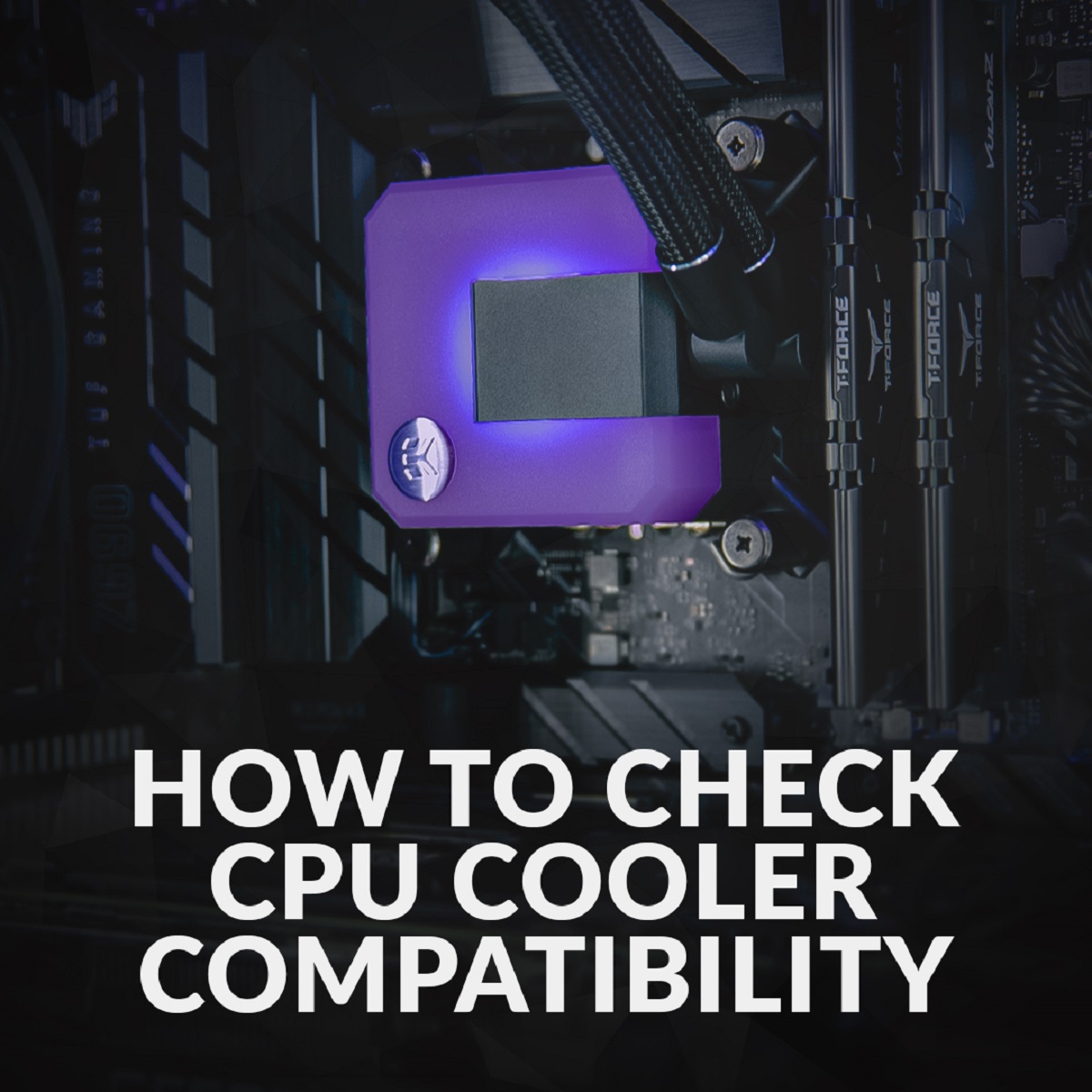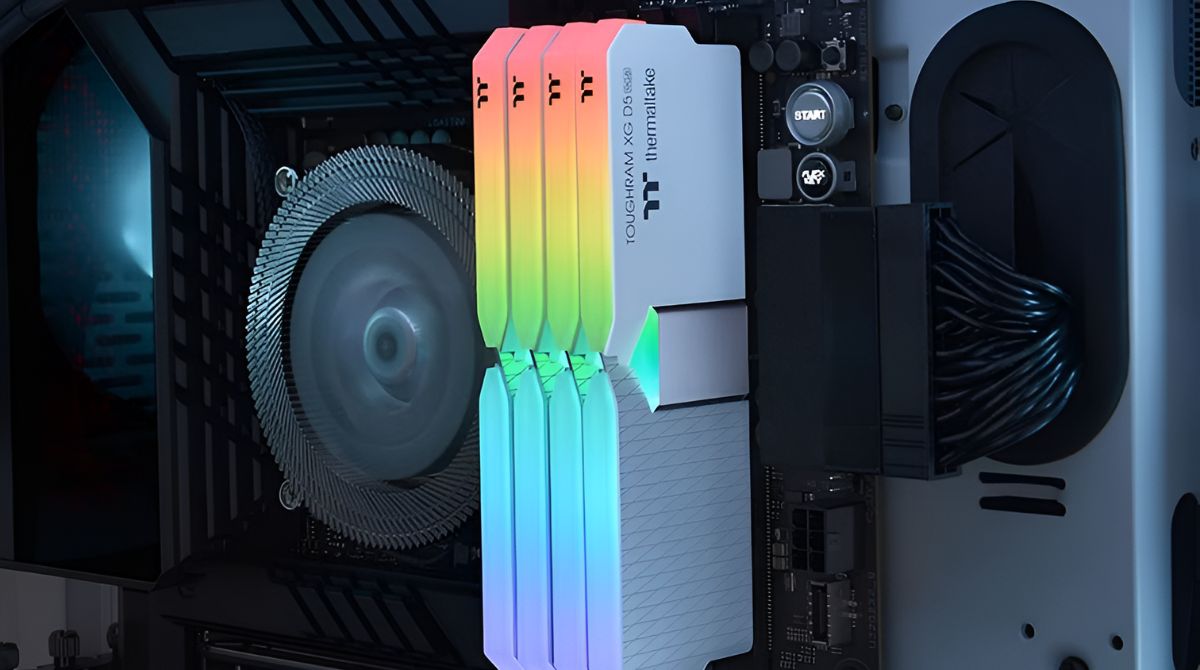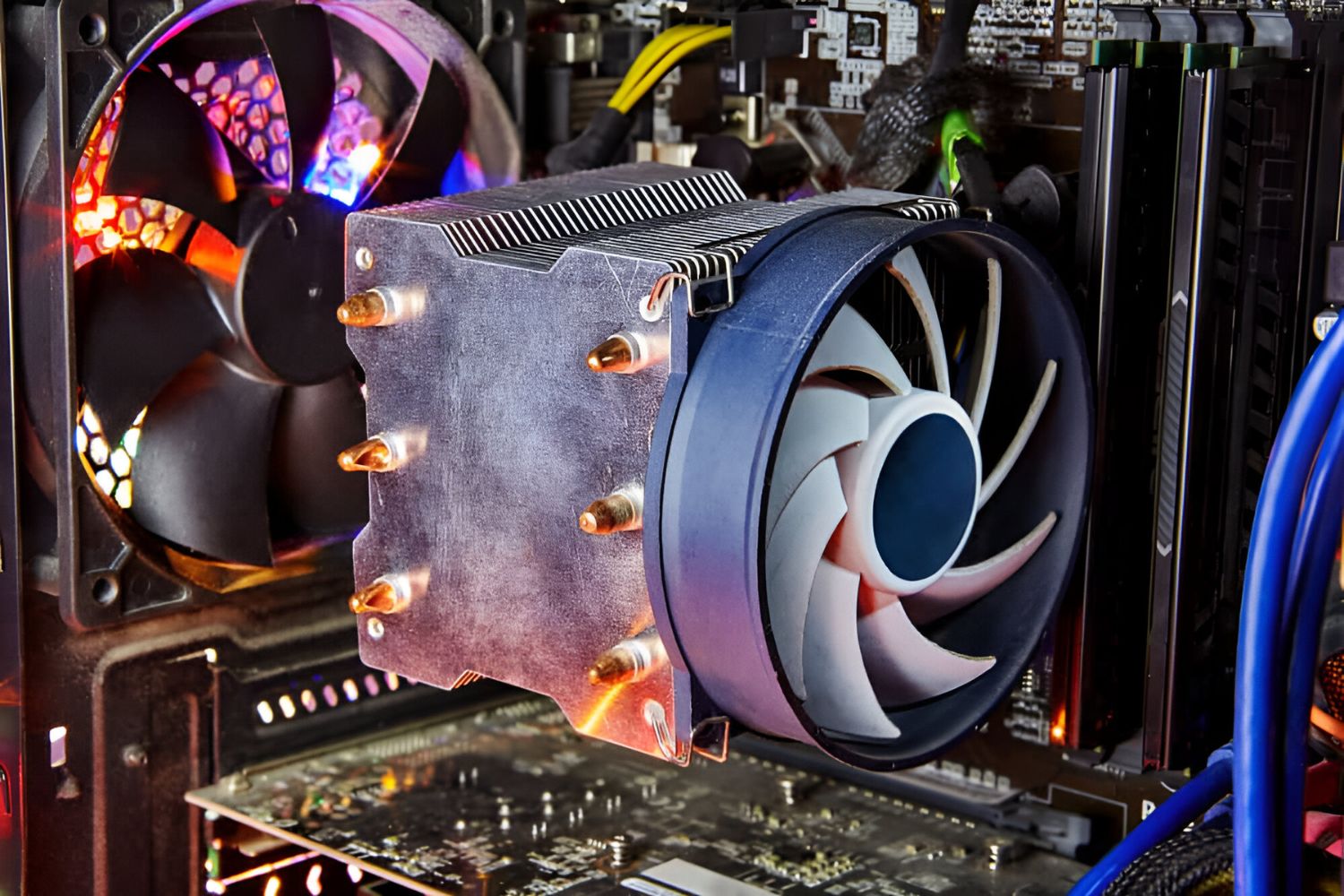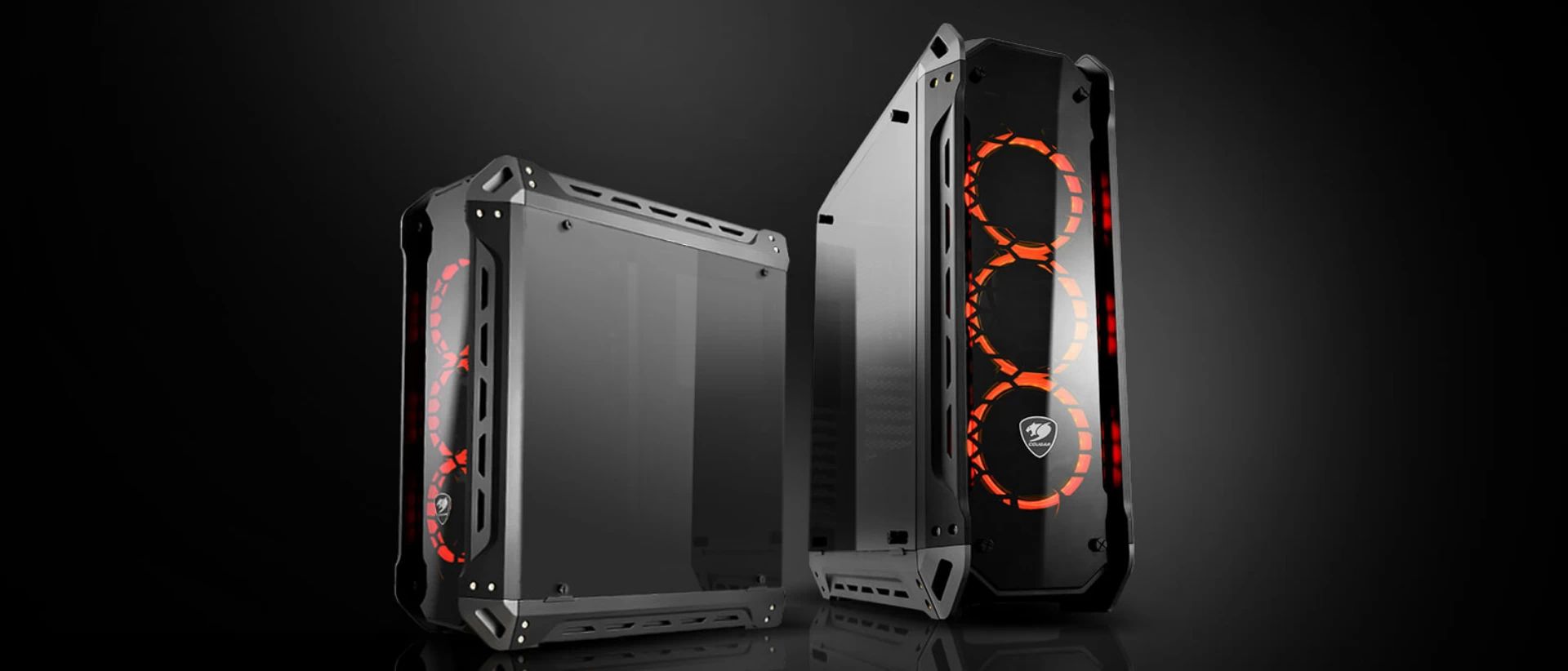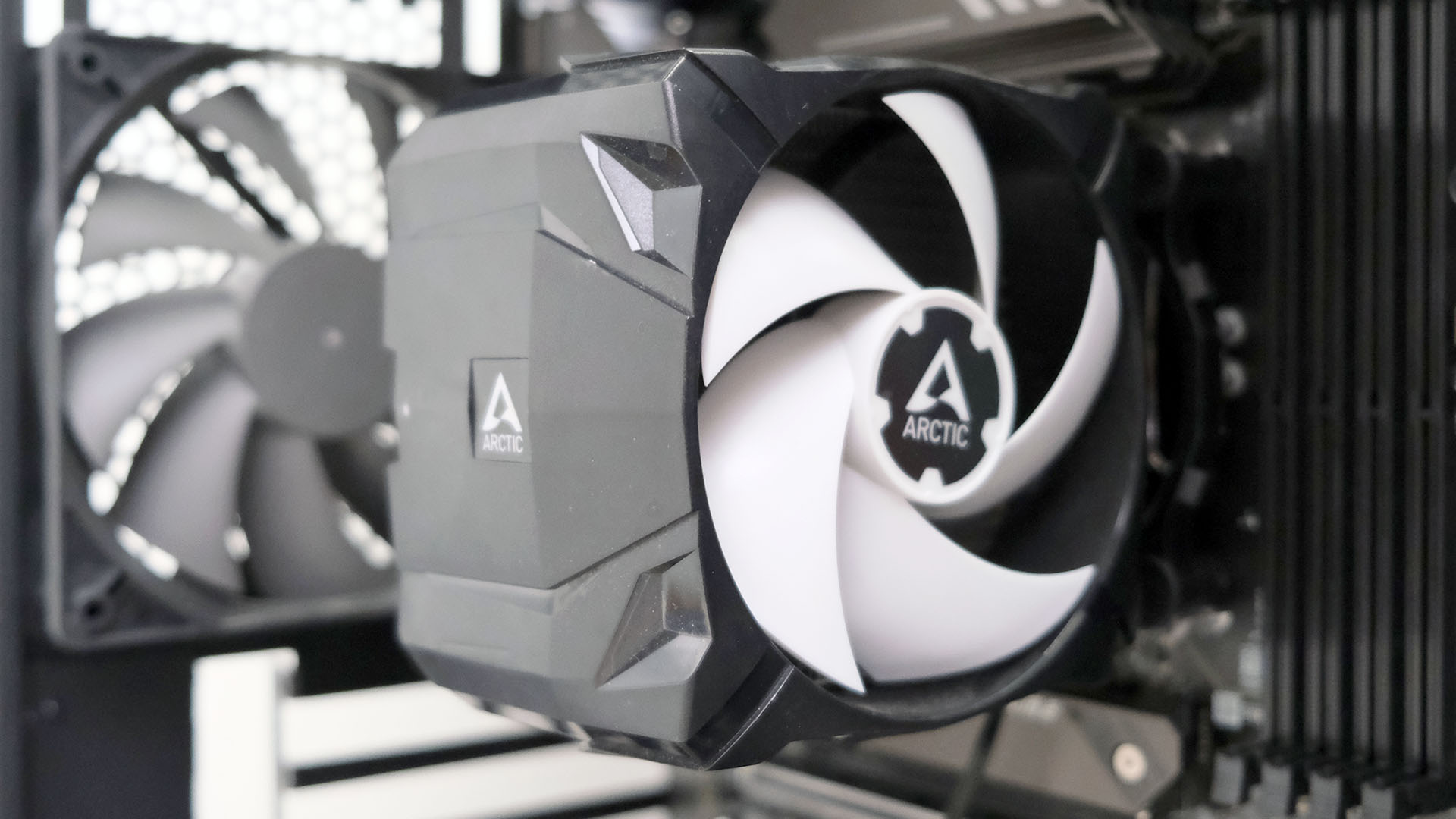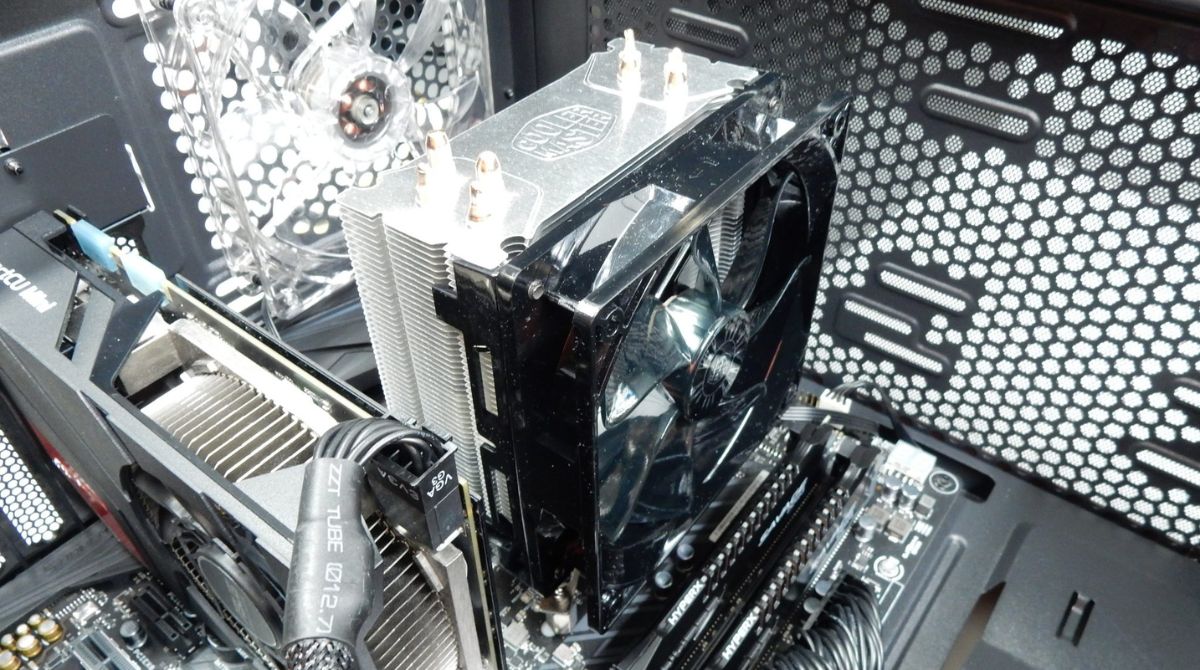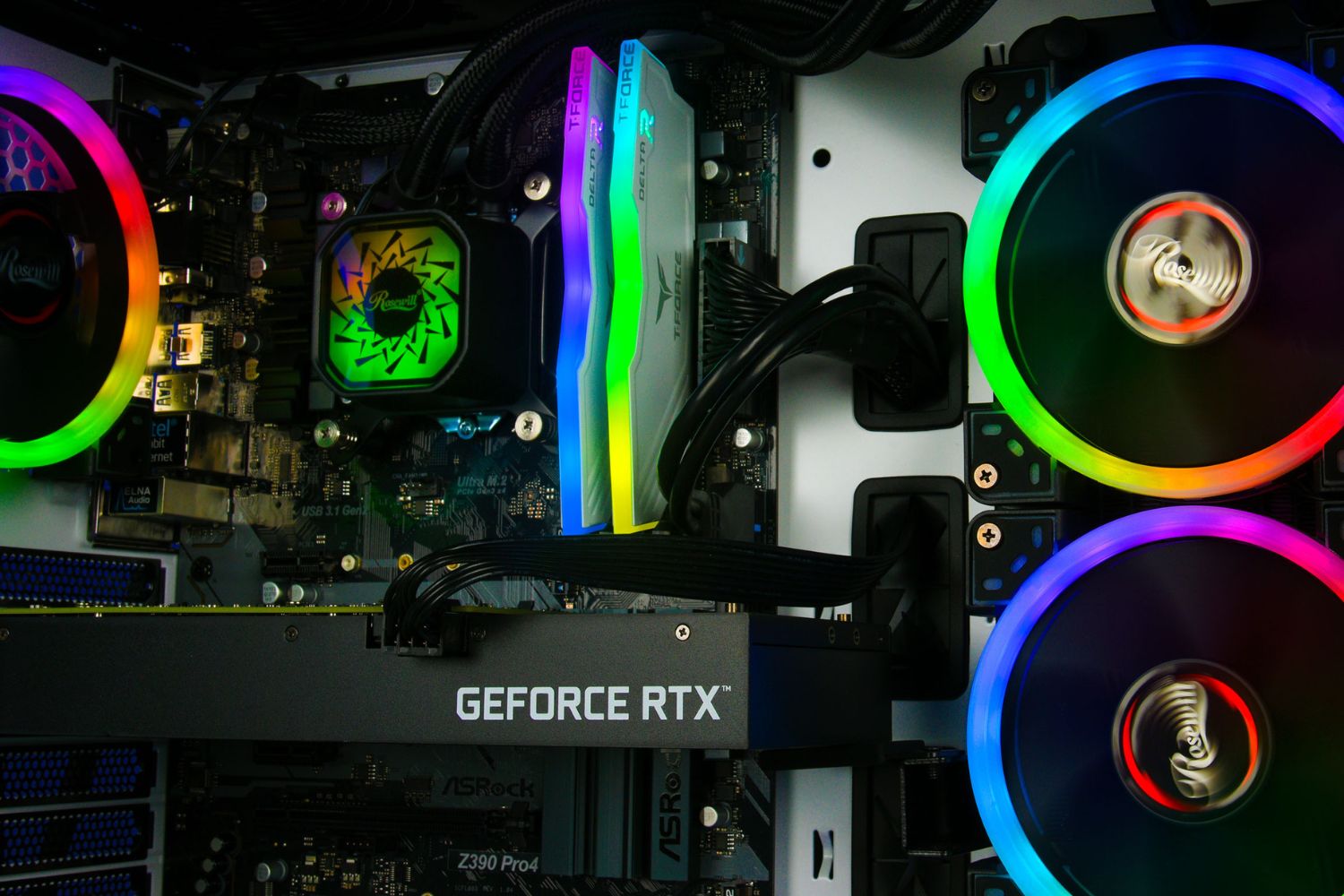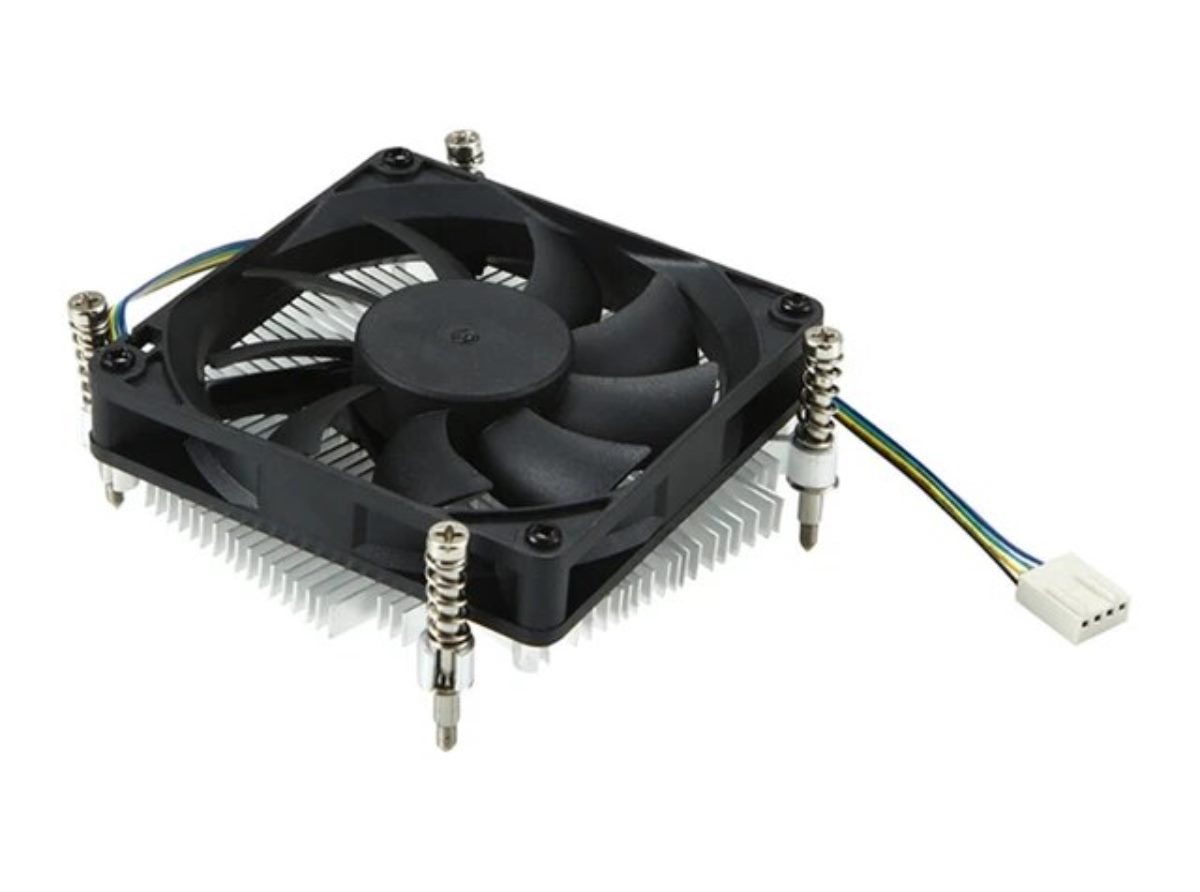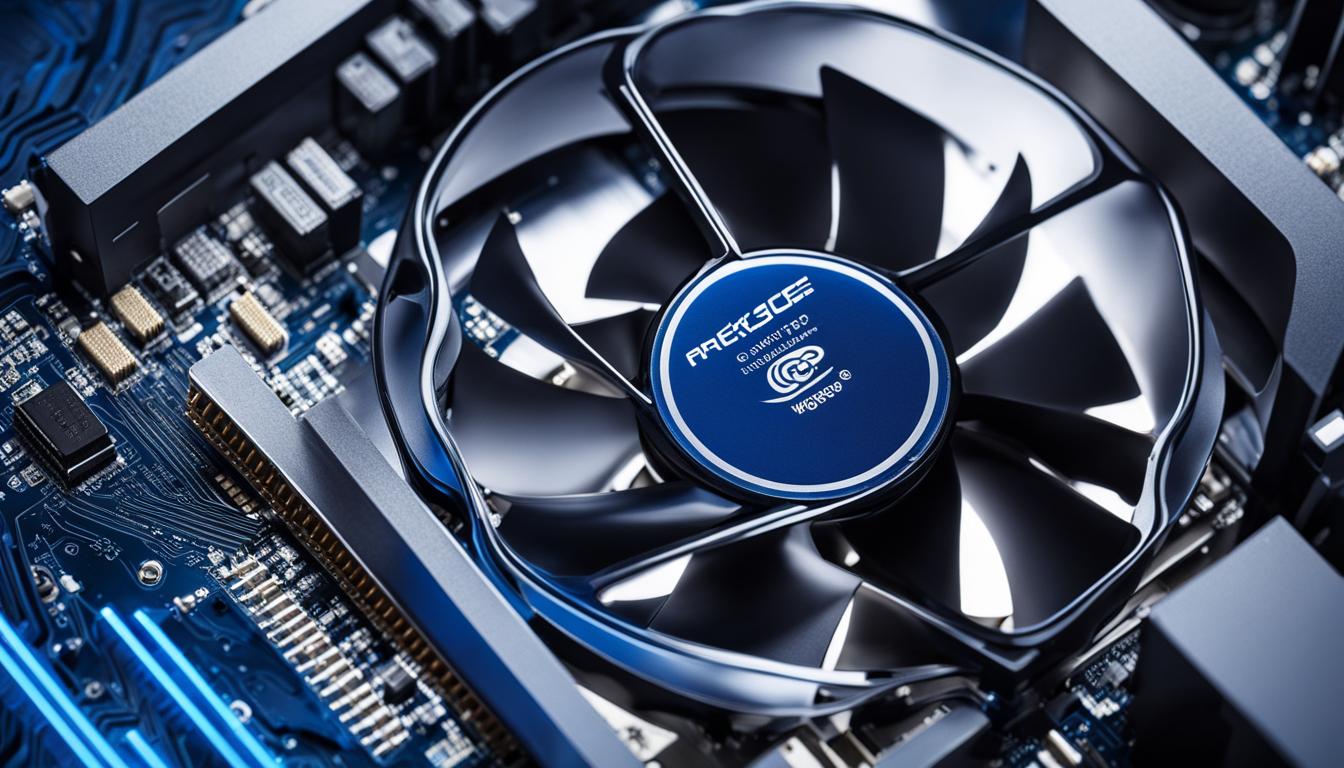Introduction
When it comes to building or upgrading a computer, ensuring that all the components are compatible is crucial. Among these components, the CPU cooler and motherboard compatibility is often overlooked. However, understanding if your CPU cooler is compatible with your motherboard is essential to ensure optimal performance and prevent any potential issues.
A CPU cooler is a vital component that helps dissipate heat generated by the processor, ensuring it remains within safe operating temperatures. On the other hand, the motherboard acts as the central hub connecting all the components of a computer, including the CPU, RAM, storage devices, and peripherals.
Before delving into the factors to consider for CPU cooler and motherboard compatibility, it is important to note that there are various types of CPU coolers available, such as air coolers and liquid coolers. Each type may have different requirements and considerations when it comes to compatibility.
Ensuring compatibility between your CPU cooler and motherboard is essential for several reasons. Firstly, it ensures proper installation and functioning of the CPU cooler, which directly impacts the temperature and performance of the processor. An incompatible CPU cooler can lead to overheating issues and reduced performance.
Secondly, a compatible CPU cooler and motherboard combination provide proper mounting options. Each CPU cooler has specific mounting mechanisms, such as brackets or screws, that allow it to be securely attached to the motherboard. Having a compatible combination ensures that these mechanisms align correctly and provide a stable and secure installation.
Lastly, compatibility also allows for better cable management and space utilization within the computer case. CPU coolers vary in size and design, and a compatible model ensures that it fits within the available space provided by the motherboard and case. This can be especially important when building a compact or small form factor system.
Now that we understand the importance of CPU cooler and motherboard compatibility, let’s explore the factors to consider when checking if your CPU cooler is compatible with your motherboard.
What is a CPU Cooler?
A CPU cooler is a crucial component of a computer that helps manage the heat generated by the central processing unit (CPU). The CPU is one of the most power-hungry components and can generate a significant amount of heat during operation. Without a proper cooling system, the CPU can overheat, leading to performance issues and potential damage.
The CPU cooler’s primary function is to dissipate the heat generated by the processor, ensuring its temperature remains within safe operating limits. It does this by either actively or passively cooling the CPU. Active cooling involves the use of a fan or fans to blow air over a heatsink attached to the CPU, helping to transfer heat away. Passive cooling, on the other hand, relies solely on the design of the heatsink to dissipate heat without the aid of a fan.
CPU coolers come in various forms, including air coolers and liquid coolers. Air coolers are the most common and affordable option. They consist of a heatsink made of metal, usually aluminum or copper, with heat pipes that transfer heat away from the CPU to the fins of the heatsink. A fan or fans are then used to blow air over the fins, enhancing heat dissipation.
Liquid coolers, also known as all-in-one (AIO) coolers, offer more efficient cooling compared to air coolers. They use a closed-loop system where a pump circulates liquid, usually a mixture of water and coolants, through tubes or channels connected to a CPU block. The liquid absorbs heat from the CPU and passes through a radiator, where a fan blows air over it, dissipating the heat.
High-performance CPUs, especially those used for overclocking, tend to generate more heat. Therefore, they often require more advanced and larger CPU coolers to ensure proper cooling. These coolers may have larger heatsinks, multiple fans, or even custom liquid cooling solutions to handle the increased heat production.
In summary, a CPU cooler is a vital component that helps manage the heat generated by the CPU. It ensures the CPU remains within safe temperature limits to maintain optimal performance and prevent potential damage. Whether it’s an air cooler or a liquid cooler, choosing the right CPU cooler for your specific needs and ensuring compatibility with your motherboard is crucial for a stable and efficient computer system.
What is a Motherboard?
The motherboard is the main circuit board of a computer system that serves as a hub for connecting all the essential components. It provides the necessary electrical connections, interfaces, and communication pathways that allow various hardware devices to work together seamlessly.
At its core, the motherboard houses the central processing unit (CPU), which is often considered the brain of the computer. The CPU is connected to the motherboard through a socket, allowing it to interact with other components and perform calculations and processes.
In addition to the CPU socket, the motherboard also has slots for memory modules (RAM), expansion cards (such as graphics cards, sound cards, and network adapters), and storage devices (such as hard drives and solid-state drives). These slots and connectors are standardized to ensure compatibility among different components.
Furthermore, the motherboard acts as the central communication hub, providing connectors for peripheral devices such as USB ports, audio jacks, Ethernet ports, and display outputs. These connectors allow users to connect external devices and expand the functionality of their computer system.
The layout and design of a motherboard can vary depending on its form factor. The most common form factors for desktop computers are ATX (Advanced Technology eXtended) and microATX. These form factors determine the physical size and arrangement of components on the motherboard, as well as the number of expansion slots and ports available.
Modern motherboards also incorporate various technologies and features to enhance performance and functionality. For example, they may include multiple slots for high-speed PCIe (Peripheral Component Interconnect Express) expansion cards, support for advanced storage interfaces like M.2 or NVMe, and integrated Wi-Fi and Bluetooth capabilities.
The BIOS (Basic Input/Output System) is another essential component of the motherboard. It is a firmware that initializes and controls the hardware during the computer’s startup process. The BIOS also provides a user interface to configure various settings, such as boot order, CPU frequency, and memory timings.
In recent years, UEFI (Unified Extensible Firmware Interface) has been replacing the traditional BIOS in new motherboards. UEFI offers a more modern and feature-rich firmware interface with graphical capabilities and easier navigation.
In summary, the motherboard serves as the backbone of a computer system, providing the essential connections and interfaces for all the components to work together. It houses the CPU, memory, expansion slots, storage connectors, and various peripheral connectors. Understanding the layout and features of your motherboard is crucial for compatibility and successful integration of other hardware components.
Factors to Consider when Checking Compatibility
When it comes to checking the compatibility between your CPU cooler and motherboard, there are several crucial factors to consider. Ensuring that these factors align will help you avoid any issues during installation and use, ensuring optimal performance and stability for your computer system. Here are the key factors to keep in mind:
- Socket Compatibility: The CPU cooler must be compatible with the socket type of your motherboard. Both Intel and AMD have various socket types, and different CPUs utilize different sockets. Make sure to check the specifications of your CPU cooler and motherboard to ensure socket compatibility.
- CPU Cooler Dimensions: The physical dimensions and height of the CPU cooler should be considered to ensure proper fit within your computer case. Some CPU coolers, especially high-performance ones or those with large heatsinks, may have clearance issues with other components such as memory modules or PCIe slots. Check the dimensions and clearance requirements of your CPU cooler and ensure they are compatible with your motherboard and case.
- Motherboard Layout: The layout of the motherboard can affect the installation and positioning of the CPU cooler. Factors such as the location of the CPU socket, nearby components, and heat sinks, and the position of the memory slots can impact the compatibility and installation process. It’s important to consider the layout of your motherboard and how it aligns with the CPU cooler you intend to use.
- Power and Heat Requirements: Some high-performance CPUs generate more heat and require more efficient cooling solutions. Ensure that your chosen CPU cooler can handle the heat dissipation requirements of your CPU. Additionally, check the power requirements of the CPU cooler to make sure your motherboard can supply sufficient power through its fan headers and connectors.
- BIOS Update: In some cases, especially when using a newer CPU with an older motherboard model, a BIOS update may be necessary to ensure compatibility. Check the manufacturer’s website for any CPU compatibility lists or BIOS updates that may be required for your specific motherboard model.
By considering these factors, you can ensure that your CPU cooler is compatible with your motherboard and avoid any potential issues. Compatibility is crucial for proper installation, optimal performance, and reliable operation of your computer system.
Socket Compatibility
Socket compatibility is one of the most important factors to consider when checking if your CPU cooler is compatible with your motherboard. The CPU socket is where the processor is installed on the motherboard, and different socket types are used by different CPU manufacturers.
Both Intel and AMD have a variety of socket types, and each generation of processors may require a specific socket type. It is crucial to ensure that the CPU cooler you choose supports the same socket type as your processor and motherboard.
When checking socket compatibility, you should consider the following:
- Socket Type: Determine the socket type of your processor and motherboard. Common socket types for Intel processors include LGA 1151, LGA 1200, and LGA 2066, while AMD processors typically use socket types such as AM4, TRX4, or sTR4. Match the socket type of your CPU cooler with the socket type of your processor.
- Socket Generation: Different generations of processors within the same socket type may have slightly different mounting mechanisms or power delivery requirements. Ensure that your CPU cooler is designed and tested to work with the specific generation of your processor.
- Supported CPUs: Some CPU coolers may have limited compatibility within a socket type. Check the manufacturer’s specifications or documentation to ensure that your specific CPU model is supported by the CPU cooler you intend to use.
- Thermal Design Power (TDP) Support: The TDP rating of a CPU cooler indicates its maximum cooling capacity. Ensure that the TDP rating of your chosen CPU cooler matches or exceeds the TDP of your processor. This ensures that the cooler can effectively dissipate the heat generated by the CPU.
- Mounting Mechanism: Different CPU coolers may have different mounting mechanisms that are specific to certain socket types. Ensure that the mounting mechanism of your CPU cooler is compatible with your motherboard’s socket layout.
By ensuring socket compatibility between your CPU cooler, processor, and motherboard, you can be confident that the cooler will fit properly and make proper contact with the processor. This ensures efficient heat dissipation, optimal performance, and stable operation of your computer system.
CPU Cooler Dimensions
When checking compatibility between your CPU cooler and motherboard, it is essential to consider the dimensions of the CPU cooler. The physical size and height of the cooler can impact its compatibility with other components in your computer system, such as memory modules, graphics cards, and case dimensions.
Here are some key factors to consider when evaluating CPU cooler dimensions:
- Clearance: Check the clearance in your computer case to ensure that the CPU cooler will fit without obstruction. Measure the available height from the motherboard to the side panel or any other components that may limit the cooler’s height.
- Memory Module Clearance: Some CPU coolers have large heatsinks or fans that can overlap with the memory slots. Make sure that your CPU cooler does not block or interfere with the installation of your memory modules. Low-profile or compact CPU coolers are often designed to provide clearance for memory modules with tall heatsinks.
- Graphics Card Clearance: In certain cases, large CPU coolers can extend over the first PCIe slot, limiting the space available for graphics cards. Ensure that the chosen CPU cooler does not interfere with the installation or operation of your graphics card, especially if you plan to use multiple graphics cards in a multi-GPU setup.
- Case Compatibility: Some compact or small form-factor cases have limited space for CPU coolers. Pay attention to the maximum CPU cooler height specified by your case manufacturer to ensure compatibility. It is important to note that larger CPU coolers may offer better cooling performance but may not fit in compact cases.
- Installation Considerations: The dimensions of the CPU cooler can also affect ease of installation. Large CPU coolers may require additional steps, such as removing the motherboard from the case, to ensure proper installation. Consider the accessibility and available space around the CPU socket when choosing a CPU cooler.
Understanding the dimensions of your CPU cooler and ensuring compatibility with your motherboard and case will help you avoid any clearance issues or installation challenges. This will allow for efficient cooling and proper integration of all components within your computer system.
Motherboard Layout
When checking compatibility between your CPU cooler and motherboard, it is important to consider the layout of the motherboard. The motherboard layout refers to the positioning and arrangement of various components, connectors, and sockets on the motherboard. Understanding the layout is crucial for ensuring proper installation of the CPU cooler and avoiding any interference with other components.
Here are some key aspects to consider when evaluating the motherboard layout:
- CPU Socket Placement: The placement of the CPU socket plays a significant role in determining how the CPU cooler will fit on the motherboard. Ensure that the CPU socket aligns with the mounting mechanism of your chosen CPU cooler. Additionally, consider any nearby components or obstructions that could impact the installation or performance of the cooler.
- Nearby Components and Heat Sinks: Take note of any nearby components or heat sinks that could potentially interfere with the installation of the CPU cooler. For example, large capacitors, voltage regulators, or memory module heat sinks may limit the available space or obstruct the mounting brackets or screws of the cooler. Check the specifications and documentation of your motherboard to identify any potential clearance issues.
- Memory Slot Positioning: The position of the memory slots can impact the compatibility of the CPU cooler, especially if it has a large heatsink or fans. Make sure that the CPU cooler does not overlap or interfere with adjacent memory slots. Low-profile or compact CPU coolers are often designed to provide clearance for memory modules.
- PCIe Slot Clearances: Consider the positioning of PCIe slots, especially if you plan to install multiple graphics cards or expansion cards. Some CPU coolers, particularly those with large heatsinks or fans, may extend over the top PCIe slot and limit the space available for graphics cards. Ensure that the chosen CPU cooler does not interfere with your desired configuration.
- Cable Management: Take into account the location of connectors and headers on the motherboard, such as fan headers and power connectors. Ensure that the CPU cooler does not obstruct these connectors, making it difficult to route or manage cables effectively. Good cable management can improve airflow and system aesthetics.
By considering the layout of your motherboard and how it aligns with the CPU cooler you intend to use, you can ensure proper installation, prevent interference with other components, and promote optimal cooling and performance for your computer system.
BIOS Update
In some cases, you may need to update the BIOS (Basic Input/Output System) of your motherboard to ensure compatibility with your chosen CPU cooler. The BIOS is responsible for initializing and controlling the hardware components during the startup process of your computer. It also provides a user interface to configure various settings.
Here are some key points to consider regarding BIOS updates and compatibility:
- CPU Compatibility Lists: Manufacturers often provide CPU compatibility lists on their websites, indicating which CPUs are supported by specific motherboard models. Before installing a new CPU cooler, consult these lists to ensure that your processor is compatible with your motherboard.
- BIOS Version Check: Check the current version of your motherboard’s BIOS. The manufacturer’s website will usually provide details of the latest BIOS version available for your motherboard model. Compare your current version to the latest version to determine if an update is required.
- BIOS Update Process: Each motherboard manufacturer has its own process for updating the BIOS. Typically, it involves downloading the latest BIOS update file from the manufacturer’s website and using a utility provided by the manufacturer to install the update. Follow the instructions provided by the manufacturer carefully to ensure a successful update.
- Benefits of BIOS Update: BIOS updates often include bug fixes, stability improvements, and enhanced hardware compatibility. Updating the BIOS can help resolve compatibility issues between your motherboard and the CPU cooler, ensuring optimal performance and functionality.
- Risks and Precautions: It is important to approach BIOS updates with caution. Incorrect or interrupted BIOS updates can potentially render your motherboard unusable. Ensure that you have a stable power source, follow the manufacturer’s instructions precisely, and avoid interrupting the update process. If you are unsure about performing a BIOS update, consult your motherboard manufacturer’s support or seek professional assistance.
Regularly checking for BIOS updates and installing them when necessary can help ensure compatibility between your CPU cooler and your motherboard. It is a crucial step in providing optimal performance, stability, and functionality for your computer system.
Conclusion
Ensuring compatibility between your CPU cooler and motherboard is essential when building or upgrading your computer system. A compatible combination allows for proper installation, efficient cooling, and optimal performance. By considering factors such as socket compatibility, CPU cooler dimensions, motherboard layout, and the need for a BIOS update, you can avoid potential issues and ensure a stable and well-functioning system.
Socket compatibility is a critical factor as it determines whether the CPU cooler will fit and properly connect to the processor and motherboard. Checking the dimensions of the CPU cooler is also crucial to ensure it fits within the available space, especially concerning clearance for memory modules and graphics cards.
Additionally, understanding the layout of your motherboard helps prevent interference with neighboring components and connectors. It ensures that the chosen CPU cooler does not obstruct important slots or headers, facilitating effective cable management and enhancing airflow.
Lastly, keeping the BIOS up to date can address compatibility issues and provide stability and improved performance. Checking CPU compatibility lists and following the manufacturer’s instructions for BIOS update procedures is essential to avoid any risks and ensure a smooth process.
By carefully considering these factors and ensuring compatibility between your CPU cooler and motherboard, you can build a reliable and high-performing computer system that meets your specific needs and requirements.







